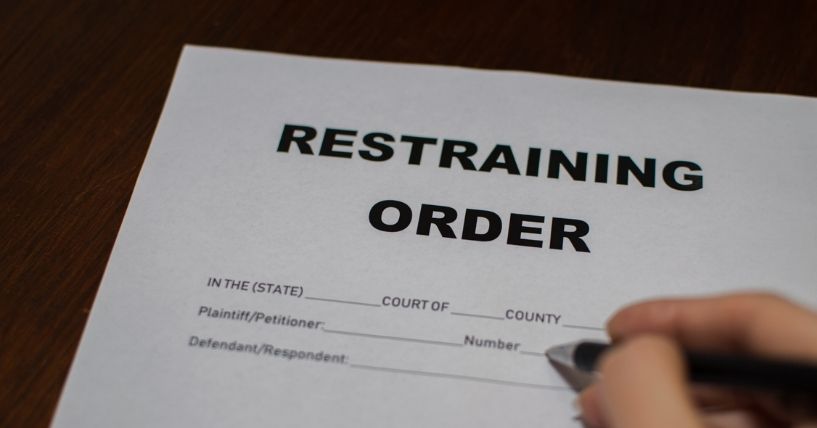
Introduction
In Nigeria, restraining and protection orders are legal tools designed to safeguard individuals from threats, harassment, or violence. These orders are crucial in cases of domestic violence, stalking, harassment, or any situation where an individual’s safety is at risk. This article provides a comprehensive guide on how to obtain restraining orders and protection orders in Nigeria, detailing the legal framework, procedures, and practical steps involved.
Legal Framework
The Nigerian legal system provides several statutes under which restraining and protection orders can be sought. These include:
1. Violence Against Persons (Prohibition) Act 2015 (VAPP Act): This federal law aims to eliminate violence in private and public life, prohibit all forms of violence against persons, and provide maximum protection and effective remedies for victims.
2. Matrimonial Causes Act 1970: This act governs matrimonial proceedings, including separation and divorce, and can be used to seek protection orders in cases of domestic violence.
3. Child Rights Act 2003: This act provides for the rights and welfare of children and includes provisions for obtaining protection orders in cases of child abuse or neglect.
4. Criminal Code Act and Penal Code: These codes criminalize acts of violence and harassment, and victims can seek protection under these statutes.
Types of Restraining and Protection Orders
1. Interim Protection Order: A temporary order granted pending the hearing of a full protection order application. It provides immediate protection to the victim.
2. Protection Order: A longer-term order granted after a full hearing, which can last for a specified period or be indefinite.
3. Restraining Order: An order that restricts the perpetrator from contacting or approaching the victim. It can also include provisions to prevent the perpetrator from visiting certain places or engaging in certain activities.
Procedures for Obtaining Restraining and Protection Orders
1. Filing a Complaint
The first step in obtaining a restraining or protection order is to file a complaint with the appropriate authorities. This can be done by:
– Approaching the Police: Victims can report incidents of violence or harassment to the police, who can then assist in filing the necessary paperwork and initiating the legal process.
– Contacting a Legal Practitioner: Engaging a lawyer who specializes in family law or criminal law can help streamline the process and ensure that the correct legal procedures are followed.
– Approaching a Magistrate Court: Victims can directly approach a magistrate court to file a complaint and seek an interim protection order.
2. Drafting and Filing an Application
Once a complaint is filed, the next step is to draft and file an application for a restraining or protection order. This application should include:
– Details of the Parties: Names, addresses, and contact information of the victim and the perpetrator.
– Statement of Facts: A detailed account of the incidents leading to the request for a restraining or protection order, including dates, times, and any evidence of violence or harassment.
– Affidavit: A sworn affidavit attesting to the truth of the statements made in the application.
– Supporting Documents: Any supporting documents, such as medical reports, photographs, or witness statements, that can corroborate the victim’s account.
3. Serving the Perpetrator
Once the application is filed, it must be served on the perpetrator. This can be done by:
– Personal Service: The application can be personally delivered to the perpetrator by a court officer or a process server.
– Substituted Service: If personal service is not possible, the court may allow for substituted service, such as by posting the application at the perpetrator’s last known address or publishing it in a newspaper.
4. Court Hearing
After the perpetrator is served, a court hearing will be scheduled. During the hearing:
– Presentation of Evidence: Both the victim and the perpetrator will have the opportunity to present evidence and call witnesses.
– Cross-Examination: Each party can cross-examine the other party’s witnesses to challenge their testimony.
– Legal Arguments: Legal arguments will be made by the lawyers representing both parties.
5. Granting the Order
After considering all the evidence and legal arguments, the court will decide whether to grant the restraining or protection order. If granted, the order will specify:
– Duration: The period for which the order will be in effect.
– Provisions: Specific provisions restricting the perpetrator’s actions, such as prohibiting contact with the victim or staying away from certain locations.
– Penalties: Penalties for violating the order, which can include fines or imprisonment.
Enforcement of Restraining and Protection Orders
Once a restraining or protection order is granted, it must be enforced to ensure the victim’s safety. Enforcement can be done by:
– Police: The police are responsible for enforcing court orders and can arrest and prosecute perpetrators who violate the terms of the order.
– Court: The victim can return to court to report any violations and seek further legal remedies.
Challenges in Obtaining Restraining and Protection Orders
Despite the legal provisions, obtaining restraining and protection orders in Nigeria can be challenging due to several factors:
1. Lack of Awareness: Many victims are unaware of their legal rights and the procedures for obtaining protection.
2. Cultural Barriers: Societal attitudes and cultural norms can discourage victims from seeking legal protection.
3. Institutional Barriers: Delays in the judicial process, lack of resources, and corruption can hinder the effectiveness of protection orders.
Conclusion
Obtaining restraining and protection orders in Nigeria is a vital step in safeguarding individuals from violence and harassment. While the legal framework provides robust mechanisms for protection, practical challenges remain. Raising awareness, improving institutional support, and addressing cultural barriers are essential for ensuring that victims can effectively access and benefit from legal protections.
References
1. Violence Against Persons (Prohibition) Act 2015.
2. Matrimonial Causes Act 1970.
3. Child Rights Act 2003.
4. Criminal Code Act.
5. Penal Code.
—
This article provides an overview of the procedures and challenges involved in obtaining restraining and protection orders in Nigeria. For personalized legal advice and assistance, it is advisable to consult with a qualified legal practitioner.
Contact Us
For premier legal research services in Civil Procedure law cases in Nigeria, contact Chaman Law Firm today. Our offices are conveniently located in Lagos, FCT Abuja, Ogun State, and the UK. We are readily available to assist you with your legal needs. Whether you require consultation, representation, or ongoing legal support, Chaman Law Firm is your trusted partner in navigating Civil Procedure law in Nigeria.
Call us at 08065553671 or email us at info@chamanlawfirm.com to schedule a consultation.
- Service of Process
- Jurisdiction
- Discovery and Inspection
- Trial and Judgment
- Pleadings
Chaman Law Firm: Your Trusted Legal Partner in Civil Procedure Law
By choosing Chaman Law Firm, you are selecting a team of dedicated professionals committed to providing exceptional legal services tailored to your unique needs. Let us be your advocate and guide in the complex world of Civil Procedure law, ensuring your interests are protected and your goals are achieved.

